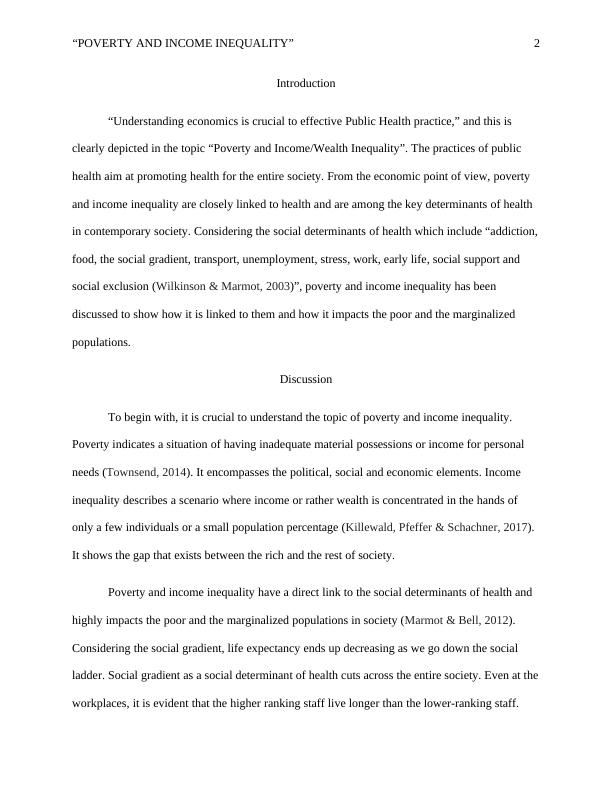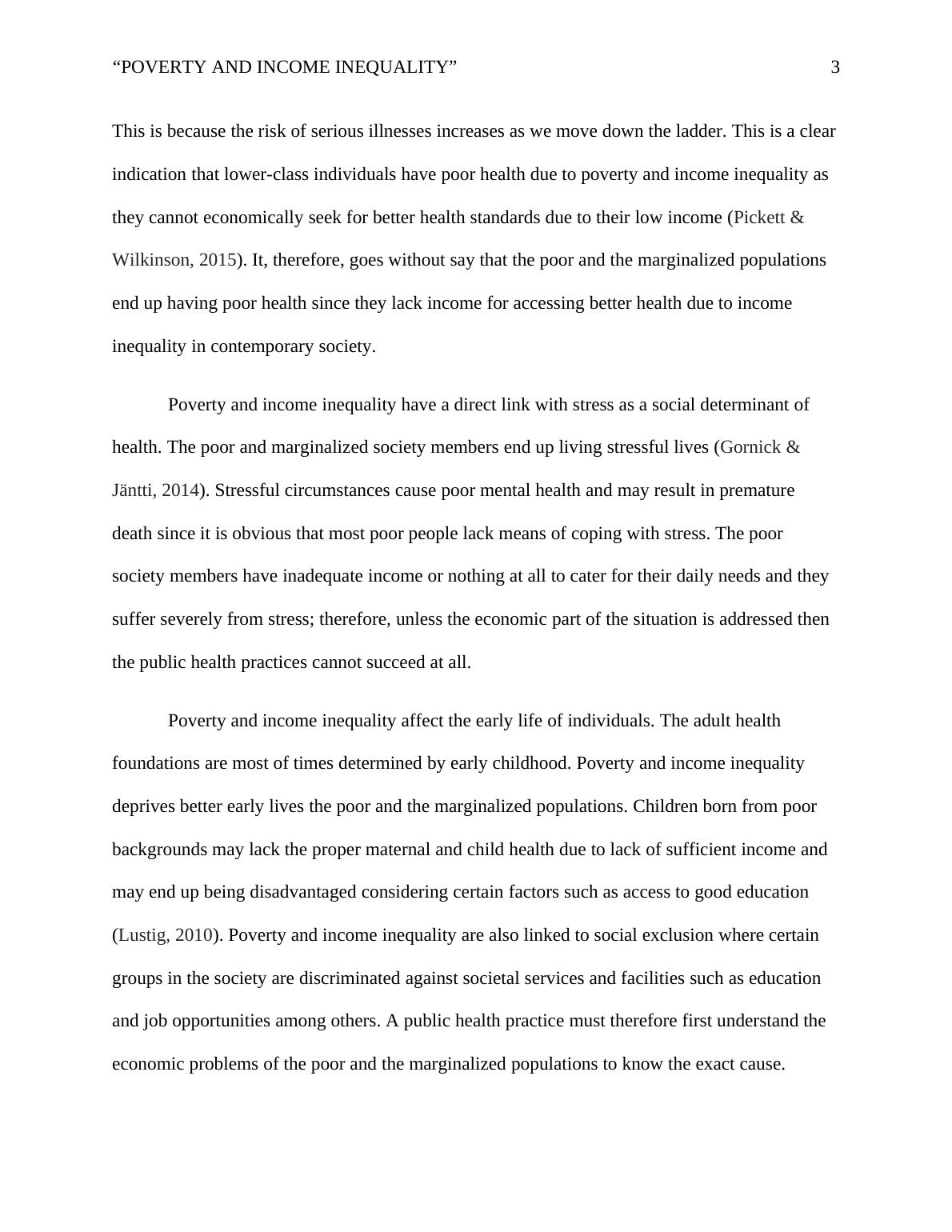Poverty and Income/Wealth Inequality
Analyzing the importance of measuring unpaid work and its impact on female workforce participation in public health economics.
9 Pages2156 Words356 Views
Added on 2022-11-26
About This Document
This article discusses the link between poverty and income inequality and their impact on health and society. It explores the social determinants of health and how they affect the poor and marginalized populations. The article also highlights the importance of understanding poverty and income inequality in developing effective public health practices.
Poverty and Income/Wealth Inequality
Analyzing the importance of measuring unpaid work and its impact on female workforce participation in public health economics.
Added on 2022-11-26
ShareRelated Documents
End of preview
Want to access all the pages? Upload your documents or become a member.
Social Determinants of Health and Public Health Strategies
|8
|2074
|490
Social Determinants of Health - PDF
|10
|2288
|280
Health Inequalities Assignment
|9
|2159
|106
Critical Healthcare Practice: Understanding the Link between Poverty and Indigenous Health in Australia
|4
|509
|116
Determinants of Health: Social, Historical, and Cultural Factors
|8
|1834
|244
(PDF) Reducing Health Inequalities
|4
|751
|202



